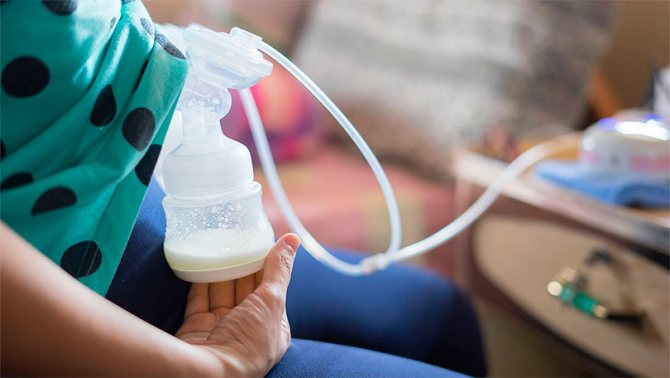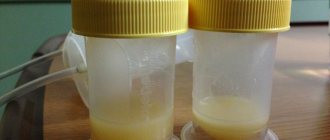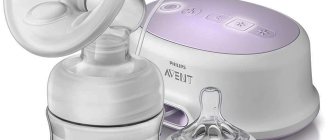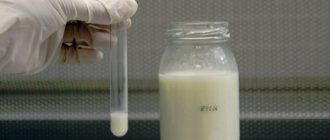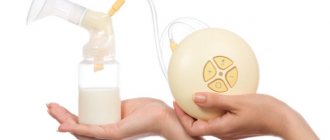Every young mother, in order to feed her baby breast milk, is ready to try any methods and means that increase lactation. The simplest one is pumping. However, there is a dilemma here: is it necessary to express milk after each feeding? The experienced mother-in-law says “yes”, the all-knowing friend says the opposite, the visiting nurse admits both, advising to listen to the body. Let's try to help nursing mothers find a middle ground.
- Why is it necessary to express milk?
- Indications for pumping
- Pumping rules
- Rules for storing expressed milk
When can pumping help?
Several decades ago, breastfeeding women were advised to regularly express their breasts to prevent excess milk from causing the development of mastitis or lactostasis. It was believed that such manipulations stimulate lactation and the baby will definitely not starve. This is partly true, but a child is not able to handle such a volume of food. Nature has thought through all the processes and mechanisms in the female body, so milk is produced exactly as much as a baby can eat.
Stimulation of lactation occurs while the baby is suckling - no additional manipulations are required. If you interfere with the natural process, the body will receive a signal to increase milk volume, which can lead to stagnation or mastitis. Modern pediatricians answer negatively to the question of whether it is necessary to constantly express after each feeding. They recommend putting the baby to the breast on demand to allow the mammary glands to release naturally. Do not worry that over time you will need more food - the baby will adjust the required portion himself. You just need to listen to the child’s wishes and support night feedings to produce prolactin.
However, there are situations when you need to express breast milk:
- Temporary separation from the baby. If your mother works part-time or goes to the doctor or hairdresser, it is advisable to leave a supply of milk. Even with a short separation, the breasts will swell and it will be very difficult to develop.
- Taking medications that are incompatible with breastfeeding. For each drug, consultation with a doctor is required.
- Milk deficiency. You should really assess the situation, and not be based on your own feelings or the advice of others. If the child is gaining weight normally, and urination occurs more than 8 times a day, the amount of nutrition is quite enough.
- Strong flow of milk. In this case, doctors advise putting the baby to the breast more often. After a few days, the level of the hormone prolactin will normalize, and the hot flashes will disappear.
- Premature birth. Low birth weight and premature babies have a poorly developed sucking reflex, and sometimes do not have enough strength to “get food.” The mother will have to express breast milk, not forgetting to regularly offer the baby the breast.
Important! If microcracks in the nipples do not allow you to feed your baby normally, it is better to pump during the recovery period. It is advisable to carry out the procedure before each feeding.
When and how should you pump?
In fact, pediatricians and lactation consultants have clear recommendations regarding pumping. The rules for successful feeding developed by the World Health Organization state that if the baby is fed not according to a schedule, but on demand, then there is no need to pump after each breastfeeding. In this case, milk is produced exactly as much as the baby needs, i.e. The amount of milk in the mother's breast is regulated depending on how often and how intensely the baby sucks. Why is this happening? It's all about the hormones that control lactation - prolactin and oxytocin.
Breastfeeding: prolactin
Prolactin is responsible for the secretion of breast milk. The amount of milk a mother has depends on it - the more prolactin, the more milk there will be. But in order for hormones to begin to be produced, they must receive a signal. The baby's sucking of the breast stimulates the sensitive nerve endings of the areola, from which a signal is transmitted along the nerves to the corresponding brain center - the pituitary gland, where prolactin is produced. Prolactin, in turn, stimulates the secretory cells of the mammary gland to produce a new portion of milk. Thus, the more often and more actively the sucking occurs and the more completely the breasts are emptied, the greater the release of prolactin will be, and, accordingly, the greater the amount of milk will be produced. If you rarely put your baby to the breast, milk accumulates in the mammary gland, and the body reacts to this by reducing its production. If there is a lack of milk, the quantity can be increased by putting the baby to the breast more frequently. This is the so-called supply-demand principle.
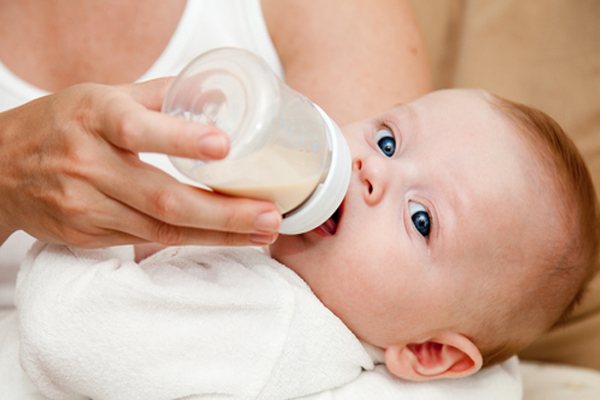
Breastfeeding: Oxytocin
The second hormone, oxytocin, promotes the release of milk from the breast during feeding. Under its influence, the muscle fibers located around the lobules of the mammary gland contract and squeeze milk into the ducts towards the nipple. Decreased oxytocin production makes it difficult to empty the breast, even if there is milk in it. Thus, it becomes clear that the most common myth about pumping “to avoid wasting milk, after each feeding you need to express your breasts to the last drop” has nothing to do with reality. When pumping after feeding, the breast receives “false” information about how much milk was used. At the next feeding, the milk will arrive in the “wrong” amount: sucked by the baby plus expressed. That is, regular pumping of the breast after each feeding will lead to an increase in milk production (hyperlactation) and, as a result, will increase the likelihood of developing lactostasis and mastitis. After all, the baby will not be able to suck out the large volume of milk that has formed, and it will stagnate in the breast. In addition, you can express milk until the last drop all day long, because it continues to be constantly produced. In addition, by expressing milk after each feeding, a mother can harm not only herself, but also her baby. The fact is that when a woman expresses her breasts after feeding, she removes from her “hind” milk, the most nutritious and fatty milk, which contains a lot of lactase, an enzyme that breaks down lactose (milk sugar). Lactose itself is predominantly found in “foremilk” (that which is released at the beginning of feeding). Feeding a child only “foremilk” leads to more milk sugar entering the intestines than necessary. As a result, the baby’s gastrointestinal tract can no longer cope with a large volume of lactose, fermentation, abdominal pain, and stool disorders (liquid with herbs and foam) occur. All this leads to the development of lactase deficiency. In addition, by eating only “foremilk”, the baby does not receive the nutrients it needs.
When should you pump?
When the mother gives the baby the breast at his first request, does not limit the time of sucking, does not supplement him with water, sufficient stimulation of the mammary glands occurs and the woman’s body itself “calculates” how much milk to produce. In this case, there is no need to express. But there are special cases when a nursing mother, for some reason, needs to express milk. They can be divided into three large groups: Mom has too much milk, and you need to get rid of its excess. This usually happens during the period of lactation, when milk arrives very quickly, the baby does not have time to suck it out, and additional release of the breast is required to avoid stagnation of milk and the development of mastitis. The mother has a need to feed the child. This situation may arise if:
- The baby sucks poorly (inactively) at the breast. Most often, this problem occurs in children who are weakened due to an unfavorable course of pregnancy and difficult childbirth. Prematurity, hypoxia during childbirth, damage to the nervous system, and birth injuries lead to the fact that, due to the delayed maturation of centers in the brain, the sucking reflex is not expressed at the time of birth, or the baby is very weak after birth and finds it difficult to breastfeed. It is difficult for the baby to latch onto the breast, which happens if the mother has inverted or flat nipples.
- There are cracks in the nipples. For deep and painful cracks in the nipples, pumping and feeding the baby with expressed milk may be recommended as a temporary measure for their healing.
- When mother and baby are separated, for example, if a nursing mother needs to leave for a while (to work, study, etc.) and she misses feeding time, or the woman gets sick and is hospitalized.
- It is necessary to stimulate milk production. Such measures have to be taken when: milk is produced in insufficient quantities; the mother needs to support lactation for the time when she is separated from the baby and is temporarily unable to feed her (when treated with drugs that are incompatible with breastfeeding).

When to pump in advance?
It depends on what caused the pumping.
- If there is a lot of milk. If there is an excess of milk, which most often occurs during the period of establishing lactation, it is recommended to express the breast not completely, but until a feeling of relief in the mammary glands. In this case, you should not be overzealous with expressing and it is important to remember that the more milk is expressed, the more milk will subsequently arrive.
- When a nursing mother needs to stimulate milk production, pumping at night . The hormone prolactin, which is responsible for the formation of milk, is secreted most at night, so pumping at this time helps to increase lactation.
- If mom needs to go away. When a nursing mother cannot regularly feed her baby from the breast, then to maintain lactation it is necessary to adhere to a certain pumping schedule. If she is away for up to 3 hours, then it is necessary to feed (or express) before leaving and immediately after returning home. If the mother is absent for 4 to 6 hours, the mother will need to express milk 2-3 hours after the last feeding. If the interval is more than 6 hours, then you will need to express every 3 hours.
How to pump correctly
If a nursing mother plans to go to work, then milk must be prepared in advance, about 1–1.5 months in advance. It is recommended to express milk once a day in the morning, between feedings, for 10-15 minutes, and freeze it. You should store milk on the basis that for every 3 hours the mother is absent, the baby will need 100–200 ml (depending on age). You can express milk by hand or with a breast pump. Usually each mother chooses the most convenient option for her. In cases where you need to quickly express your breasts or there is a need to express large volumes of milk, you can use a breast pump, which greatly facilitates this process. But as practice shows, every mother should learn how to manually express, because situations may arise when you need to express milk, but there is no breast pump at hand. Expressing your breasts by hand is effective and non-traumatic for the mammary gland. It is only important to follow the correct technique. Before pumping for the first time, it is advisable for the mother to consult a doctor or lactation consultant so that she can be shown how to do it. It is convenient if you master this skill while still in the maternity hospital. The entire pumping process can be divided into two stages. At the first stage, the mother prepares clean containers for milk (if these are not special sterile containers, then the container must be washed with water and then sterilized) and prepares herself (washes her hands thoroughly). The second stage is the actual process of expressing milk . Since the milk let-down reflex (the so-called oxytocin reflex) during pumping is not as pronounced as when a baby sucks at the breast, it is recommended to stimulate it before starting this procedure. The production of the hormone oxytocin is promoted by the positive emotions of the mother, a calm environment, and physical contact with the baby. So, let's start pumping. First of all, mom needs to take a comfortable position and relax as much as possible. A freer outflow of milk during pumping is facilitated by warm or hot drinks 10 minutes before the procedure, a warm shower, and a light stroking massage of the breast towards the areola. It must be remembered that milk accumulation does not occur in the nipple, but in the areola area, therefore, for pumping to be effective, it is necessary to squeeze this area, and not the nipple. to express the breast until it feels soft when touched with your hands, and there should be no lumps in it. If the mother finds an area of compaction, she should try to accurately strain it out. Sometimes during the process of pumping, a nursing mother may notice that the feeling of fullness in the breast remains, but milk has stopped flowing from it. In this case, it is recommended to take a short break, during which you can try to express the other mammary gland or just take a break and relax. If, after following all the recommendations for pumping, the mother notices that a very small amount of milk is expressed over and over again, then to solve this problem, you should seek help from a doctor or lactation consultant.
You may be interested in the articles “Breastfeeding after cesarean section” and “How long to breastfeed?” on the website 2mm.ru
How often should you pump?
Breastfeeding specialists advise sticking to the golden mean so as not to trigger the formation of hyperlactation. The medical staff of the maternity hospital helps young mothers cope with the first serious hot flash, which occurs 3-5 days after the birth of the baby. In just a few hours, the breasts become full, any touch causes discomfort, and pumping will bring relief. In the future, milk will begin to arrive in the amount that the baby needs.
If for some reason the mother is separated from her child for a long time, the mammary glands should be emptied up to 10 times a day. Manipulations should take at least 15 minutes, otherwise lactation will gradually subside. The endocrine system will perceive a long break as a signal that milk is not in demand and will cease to be produced.
To establish lactation, it is advisable to start pumping 6-8 hours after birth. Even if only colostrum comes out, the process will start milk production. A night break of 5 hours is allowed, but closer to the morning the manipulations must be resumed. The period from 4 to 8 am is called the “prolactin window” - at this time the hormone receives a “command” to work. Doctors do not see the advisability of pumping after each feeding if the baby willingly takes the breast, drinks the norm, and nothing bothers the mother.
The myth of the need to express everything “to the last drop”
Many families remember the now outdated recommendation from the Soviet Union “after each feeding, express milk from the breast to the last drop.” The arguments in support of it are very varied and frightening, ranging from the occurrence of lactostasis, leading to mastitis, to the complete disappearance of lactation.
Indeed, just fifty years ago, these tips were very relevant: the mother had to go to work just two months after giving birth and, in the best case, the baby received breastfeeding, only six times a day and with a long break at night. At the same time, only one breast was offered at one feeding. Thus, the child suckled one breast only three times a day.
Naturally, with such rare stimulation, both mastitis, at the beginning of feeding, and the loss of milk, several months after childbirth, were completely non-mythical dangers, from which regular pumping of both mammary glands “to the last drop” saved us. But in the case when the child is fed on demand, according to WHO recommendations, there is no longer a need for pumping to maintain the desired level of lactation.
When exactly to express - effective schemes
If, when attached to the breast, the baby correctly grasps the areola, a stable vacuum is created. At the moment of sucking, all the muscles of the baby’s face are involved - neither a woman’s hands nor the most high-quality and innovative breast pump can replicate natural stimulation. Young mothers mistakenly mistake the volume of expressed milk for the amount in the breast, so during manipulation they worry that the baby will not have enough nutrition.

Unnecessary worries and stress only aggravate the situation, since adrenaline inhibits lactation. If you don’t think about the end result and don’t look into the container where the milk is expressed, you can get a lot more nutrition for the baby. There are no clear recommendations or schemes - a lot depends on the situation. However, a few proven tricks will help you pump effectively:
- Hands do not imitate a baby's sucking movements, so it is useful to use a breast pump. Experienced mothers combine two options for expressing: using the vacuum of the device to stimulate the flow of milk, finishing the process with their hands.
- Usually the last drops flowing from the breast become a signal for the woman to stop manipulation. If you need to increase your milk volume, it is advisable to continue pumping for 2-3 minutes.
- Simultaneous expression of two mammary glands improves lactation.
- By sucking, the baby well stimulates the flow of milk - while the baby eats from one breast, the second begins to swell, drops and even streams are released. If a mother finds herself in a situation where breast milk must be expressed, feeding her baby is the ideal time to get an additional portion.
If the baby is breastfeeding, it is better to carry out manipulations half an hour after feeding or immediately after it ends. Many mothers are interested in whether it is necessary to constantly express foremilk before feeding. The older generation considers it “empty”, arguing that there is nothing beneficial for a newborn in a low-fat product. According to pediatricians, foremilk can quench a child's thirst, so you should not get rid of it.
Storing expressed milk
These principles for storing expressed breast milk are only suitable for full-term healthy babies.
Parents of eight children and authors of many books about “raising children” in the style of natural parenting, William and Martha Sears, in their book “Breastfeeding,” write that thick-walled containers made of food-grade plastic or glass guarantee the best immune protection for milk. And sterilization of these containers is no longer considered important; it is enough to wash them thoroughly with a good detergent, like ordinary children's dishes. There are also special disposable bags for freezing and storing breast milk and jars included with breast pumps.
Storage at room temperature
Breast milk and colostrum expressed in the first 6 days after birth can be safely stored at room temperature for up to 24 hours. Milk expressed a week after birth can be stored under similar conditions for up to 10 hours.
Cold storage
The same immune properties of breast milk that protect the baby’s body also protect the milk itself from the negative effects of microorganisms; when stored on a shelf in the refrigerator, according to research, milk can be stored for 8 days. It is advisable to determine the coldest place for it in the refrigerator - at the back wall of the refrigerator compartment. If you store milk in the door, the shelf life can be reduced to 5 days. If milk was stored at room temperature for some time before cooling, this also reduces its shelf life.
Freezer storage
Freezing reduces the immune properties of breast milk, so it is better to feed your baby fresh milk from the refrigerator, after preheating it to 37 degrees. If there is a need to freeze milk and create a breast milk bank, each container should be marked with the date of expression so that the expiration date of the milk can be easily determined.
The shelf life in the freezer compartment of the refrigerator is 3-6 months, depending on the frequency of opening the chamber door.
Milk should also be stored at the back wall. Also, if milk was stored at room temperature or in the refrigerator before freezing, its shelf life may be shorter. Once defrosted, it should be kept in the refrigerator for no more than a day. In this case, repeated freezing is not allowed. If you liked the article, please share a link to it
Expression technique
You need to choose the optimal method based on your own feelings and comfort. It is advisable to perform the first pumping manually in order to control the process as much as possible and stop when pain occurs. However, with full mammary glands, it is better to use a breast pump, starting with the minimum vacuum level.
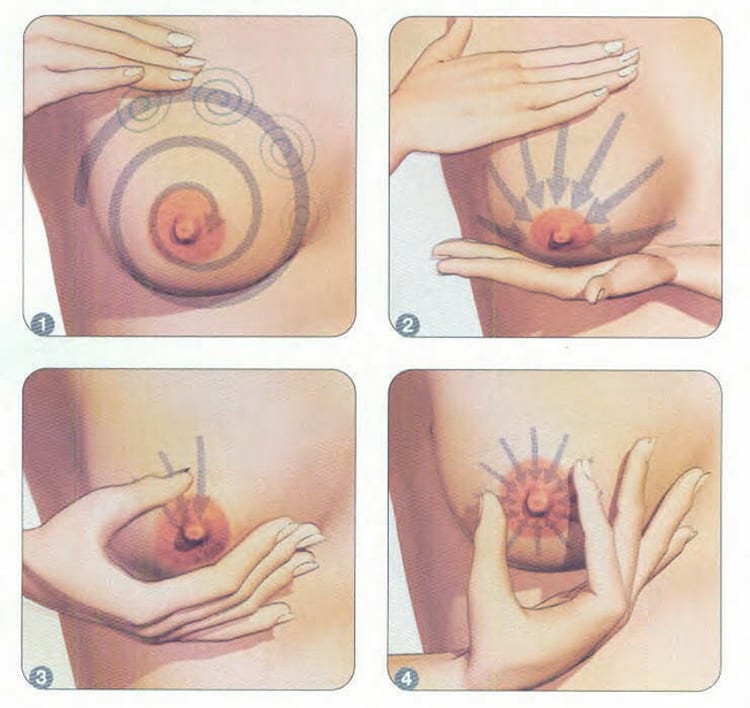
If the breast is soft, but you need to stock up on food for the baby, the manual method is suitable. It's helpful to try both techniques before making a choice. Experts advise purchasing an electric breast pump if you plan to pump regularly. The only prohibition on using the device concerns cracked nipples - the vacuum will aggravate the painful condition of the breast.
How to express breast milk?
Manual expression
The softest option for pumping is with your hands. Here is a common technique: place the thumb on top of the areola, and the ring and index fingers on the bottom border. Without unnecessary effort, press the mammary gland towards the back, and then move them forward, while your fingers should not rub against the skin of the chest. When milk appears, relax your hand. Repeat this operation several times. After this, move your fingers clockwise or counterclockwise, it doesn’t matter, but so that the milk comes out from all segments of the breast. There is no need to put forceful pressure on the gland, because the tissue in it is very sensitive and damage can occur from excessive pressure. The pumping process should take place without pain, if there are no cracks in the nipples or breast engorgement.
Breast pump
If you have to express a lot of milk and do it regularly, you should consider purchasing a breast pump. They come in two types: manual and mechanical (electric). It's up to you to decide which one to choose. Manual allows you to easily control the strength of the vacuum when expressing, but your hand may get tired; Mechanical ones are easier to work with if you need to express a large volume, but there is a greater chance of injury to the nipples. But you don’t even need to consider such a cheap breast pump option as a plastic horn with a rubber bulb at the end. This model has one advantage - it is cheap, but there are more than enough disadvantages: the hard plastic cone easily injures the breast, milk spreads, and works with little efficiency. For many, it is not able to express anything, but it easily damages the skin on the chest.
Let us repeat that it is extremely important that the mother does not feel pain when pumping. Because they release the hormone adrenaline, which is an antagonist to the oxytocin reflex and this makes it much more difficult for milk to leave the breast.
Also, one of the most important requirements for a pumping device is the ability to sterilize it before each use. Some models are marked with icons prohibiting heating them to 100 degrees, and, therefore, they cannot be boiled. Milk is an excellent breeding ground for the development of bacteria, which means that if the breast pump is not sterilized, bacteria remaining in any bend or narrowing of the structure will reach the baby, causing a risk of infection.
For infrequent pumping, simple manual breast pumps are suitable. They may differ in rigidity; some mothers prefer simple plastic funnels, while others prefer soft plastic or silicone funnels with a massage effect. The diameter of the funnel should be selected individually, since in the case of large or small nipples, milk will not be released effectively or the breast will be injured.
If you pump regularly, and especially more than once a day, it is better to give preference to an electric automatic model; it will save you energy and time, which can be spent on something more enjoyable.
Now they produce light and silent breast pumps that imitate the rhythm of a baby's sucking, which contributes to better milk release. They are also equipped with soft silicone funnels that do not injure the breasts. The only drawback of such models —
high cost. When choosing an electric breast pump, you must ensure that its motor does not come into contact with the expressed milk, in order to avoid the development of bacteria and infection of subsequent portions.
Rules for using a breast pump
It is necessary to choose the size of the funnel that matches the size of the areola for the best fit. It should surround the nipple closely, but leave a little space to avoid friction between the nipple and the breast shield.
Expressing should be done at the most comfortable vacuum level. It is not difficult to determine; to do this, you need to set the vacuum to the highest level until slight discomfort is achieved, and then reduce it a little so that there is no discomfort.
The main condition for high-quality pumping is stimulation of the milk let-down reflex. Pain or discomfort will cause your milk supply to be inhibited.
Expressing from both breasts at the same time saves time at least twice. When a double breast pump is used, prolactin levels increase, which means you can express more milk.
Preparing to pump
Before manipulation, you should relax and calm down to trigger the production of oxytocin and prolactin:
- It is necessary to thoroughly wash your hands, prepare a warm drink, a container for milk, napkins - and everything that may be needed in the process. It is advisable to immediately have the necessary things at hand so as not to be distracted.
- Turn on melodic music or sounds of nature and sit comfortably.
- Prepare the breasts for pumping with light stroking and tapping with your fingertips.
- Breast massage in an inclined position will help stimulate milk flow. If you bend forward a little and gently run your fingers from the armpit to the nipples, the flush will come faster.
Before pumping, it is useful to take a warm shower if there is no inflammation or swelling in the mammary glands. It is effective to apply a warm towel to the chest and have skin-to-skin contact with the baby.
Important! Actions should not cause discomfort. If manipulations from different angles cause pain, you need to visit a mammologist. The problem may not be visible visually, so a qualified inspection by a specialist will be required.
Hand expression
The process takes 15-20 minutes plus an additional few minutes to stimulate lactation:
- Place the thumb above the areola, the index finger below it. The fingers are positioned strictly parallel, you cannot put pressure on the nipple, there is no milk in it.
- Make a few rolling movements with your fingers, then lightly “press” them inward.
- Roll your fingers towards the nipple, and after milk appears, release the clamp. The fingers don't just move across the skin, they must "roll" from the chest outward.
- Even in the absence of milk, you need to continue manipulations - it will definitely appear if you are patient.
- Having emptied the breast from one position, you need to move your fingers a little further in a circle so that all lobar segments are evenly processed.
Movements can be alternated with a light massage and warm drink. Apart from a doctor, no one can answer for sure how often you need to express breast milk, but any nursing mother should understand that her health and improved lactation depend on the quality of the manipulations.
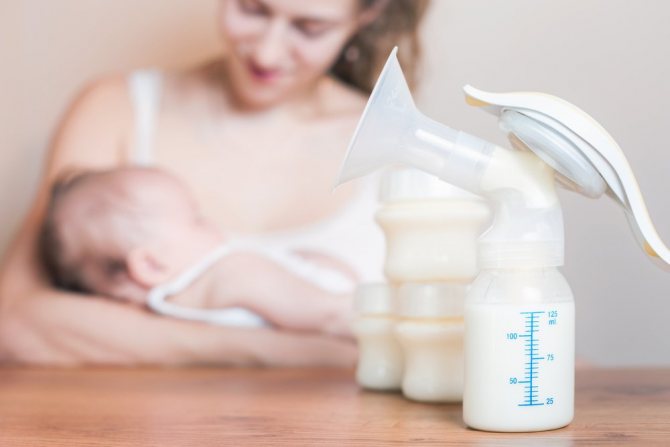
Expressing with a breast pump
Before using a manual or electric breast pump, you should read the instructions and check that the parts in the device are connected correctly. Breast attachments must be the correct size for the process to be effective and painless. You can only use a clean device; you also need to prepare a container for milk in advance.
It is better to start expressing with a minimum power level, if the breast pump equipment allows it. If there is no pain or discomfort, the intensity of the outflow can be gradually increased. It is advisable to express in short periods, taking breaks of 5-10 minutes and alternating breasts.
What to do when milk comes in?
The maximum number of myths is caused not by the question of whether it is necessary to express milk after feeding a newborn, but by the horrors of the first flush. Even before giving birth, women hear horror stories about rock-hard breasts, painful procedures and complications. All this can be avoided if timely prevention is carried out:
- It is advisable to put the baby to the breast immediately after birth, then again 2-3 hours later. If it is not possible to have contact with the newborn, you need to express.
- Between feedings, it is useful to apply a cool compress to the breast if the mammary glands begin to become intensely engorged.
It is important to ensure that the newborn grasps the breast correctly - the medical staff will tell you how best to do this. If your breasts are very sore, your temperature has risen, and you can’t express milk on your own, then the situation is getting out of control. At the first alarming symptoms, you should seek qualified help.
Why is it necessary to express milk?
Approaches to breastfeeding have changed significantly in the 21st century. Modern pediatricians welcome a free feeding regimen, that is, at the baby’s request. As the baby sucks the breast, prolactin and oxytocin begin to actively work, ensuring the formation of the required amount of milk and its timely release from the gland. Therefore, the more the baby sucks, the more milk is produced, and vice versa, if there is little milk, then the baby is applied to the breast with long intervals. Stopping sucking leads to a lack of breastfeeding. It is the child who controls the production of hormones involved in lactation, and therefore milk production. In the first days, the baby may require breastfeeding up to 12 times a day every 2-3 hours, gradually increasing the intervals between feedings.
By sucking the required volume (more or less, depending on saturation), the baby regulates the process of milk formation, while he noticeably gains weight, is calm, and sleeps well. Mom shouldn’t worry either, because by the next feeding the body will produce as much as the baby will eat. This only works ideally when the feeding schedule is set by the newborn. Accordingly, on-demand feeding does not require expressing milk after every meal.
The traditional approach to breastfeeding involves a strict feeding schedule, usually every three hours. At each feeding, only one mammary gland is used, the other is idle, accumulating milk, and the “downtime” time doubles. Women's breasts are incapable of such accumulation; to protect itself, the body significantly reduces the amount of fluid produced. During regular feeding, pumping is simply necessary, as it will support the lactation process and relieve mastitis and other health problems.
The decision about whether to express after each feeding and which approach to choose depends only on the mother, and in some circumstances it is worth listening to the recommendations of doctors. In both cases, situations arise when pumping is a necessary and forced process for the health of the woman and baby.
